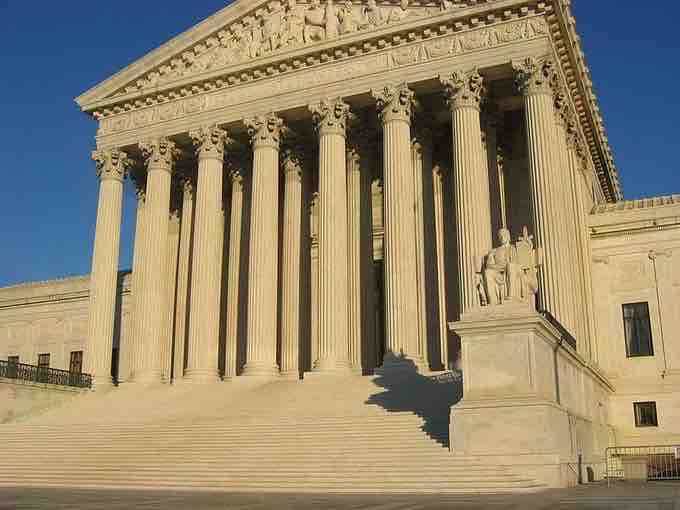A policy is described as a principle or rule to guide decisions and achieve rational outcomes. The policy cycle is a tool used for the analyzing of the development of a policy item. A standardizes version includes agenda setting, policy formulation, adoption, implementation and evaluation.
The Constitution does not explicitly grant the Supreme Court the power of judicial review but the power of the Court to overturn laws and executive actions it deems unlawful or unconstitutional is well-established. Many of the Founding Fathers accepted the notion of judicial review. The Supreme Court first established its power to declare laws unconstitutional in Marbury v. Madison (1803), consummating the system of checks and balances. This power allows judges to have the last word on allocation of authority among the three branches of the federal government, which grants them the ability to set bounds to their own authority, as well as to their immunity from outside checks and balances.

Supreme Court
The Supreme Court holds the power to overturn laws and executive actions they deem unlawful or unconstitutional.
The Supreme Court cannot directly enforce its rulings, but it relies on respect for the Constitution and for the law for adherence to its judgments. One notable instance came in 1832, when the state of Georgia ignored the Supreme Court's decision in Worcester v. Georgia. Some state governments in the south also resisted the desegregation of public schools after the 1954 judgment Brown v. Board of Education. More recently, many feared that President Nixon would refuse to comply with the Court's order in United States v. Nixon (1974) to surrender the Watergate tapes. Nixon ultimately complied with the Supreme Court's ruling.
Some argue that the Supreme Court is the most separated and least checked of all branches of government. Justices are not required to stand for election by virtue of their tenure during good behavior and their pay may not be diminished while they hold their position. Though subject to the process of impeachment, only one Justice has ever been impeached and no Supreme Court Justice has been removed from office. Supreme Court decisions have been purposefully overridden by constitutional amendment in only four instances: the Eleventh Amendment overturned Chisholm v. Georgia (1793), the13th and 14th Amendments in effect overturned Dred Scott v. Standford (1857), the 16th Amendment reversed Pollock v. Farmers' Loan and Trust Co. (1895) and the 16th Amendment overturned some portions of Oregon v. Mitchell (1970). When the Court rules on matters involving the interpretation of laws rather than of the Constitution, simple legislative action can reverse the decisions. The Supreme Court is not immune from political and institutional restraints: lower federal courts and state courts sometimes resist doctrinal innovations, as do law enforcement officials.
On the other hand, through its power of judicial review, the Supreme Court has defined the scope and nature of the powers and separation between the legislative and executive branches of the federal government. The Court's decisions can also impose limitations on the scope of Executive authority, as in Humphrey's Executor v. United States (1935), the Steel Seizure Case (1952) and United States v. Nixon (1974).